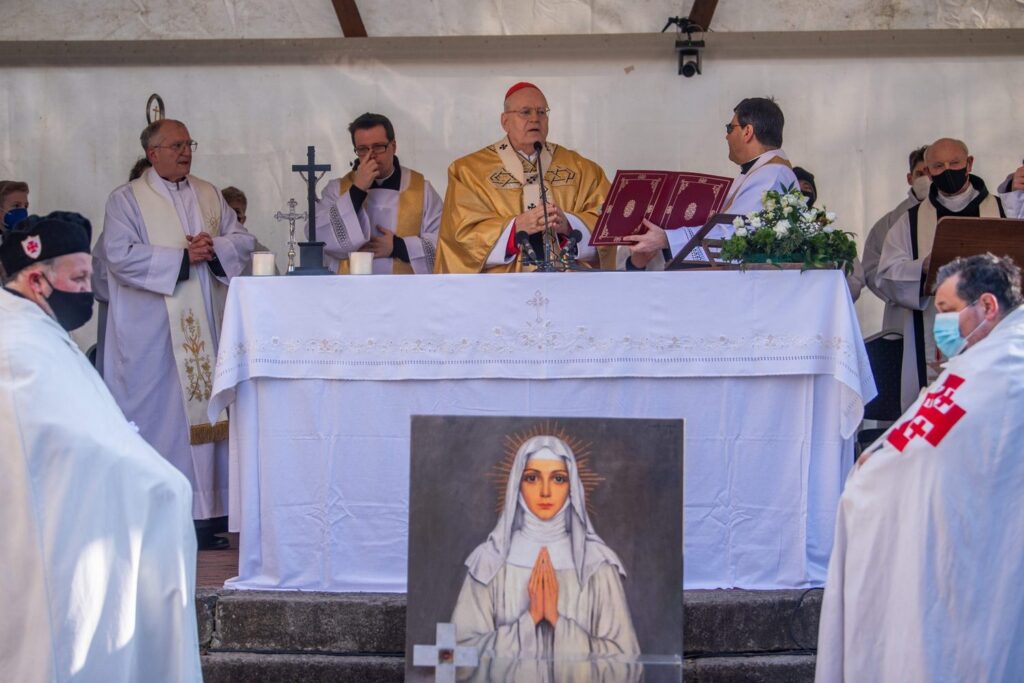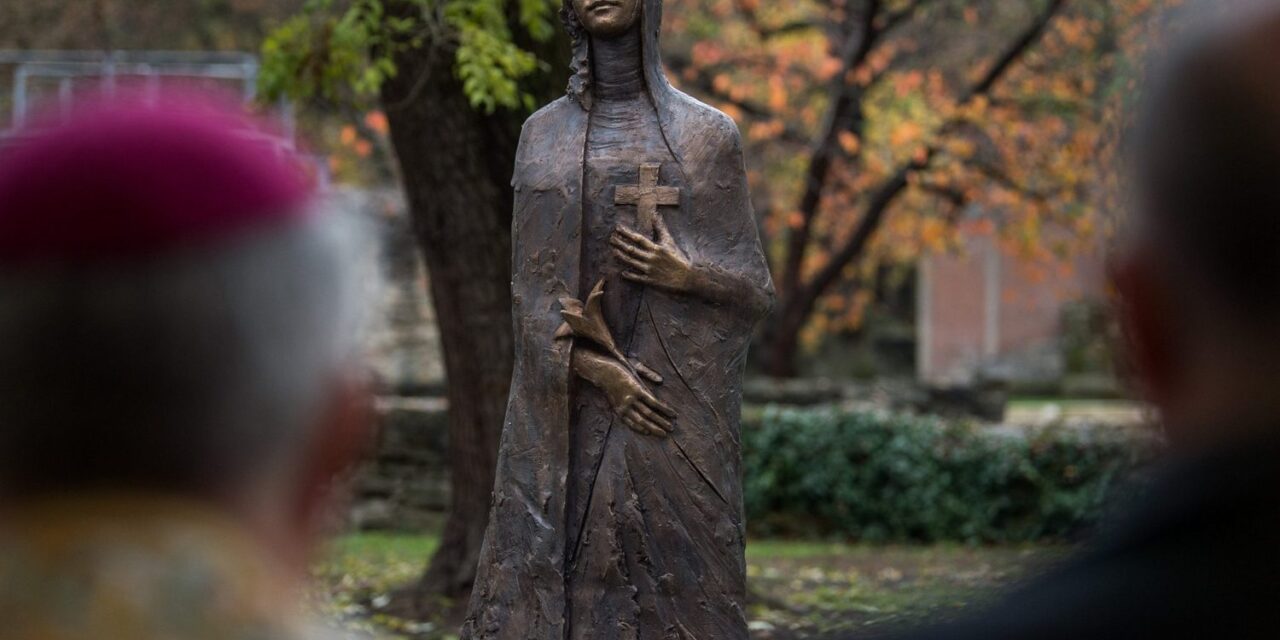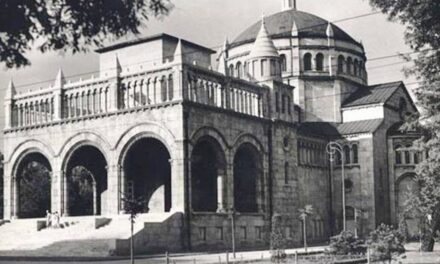The beautiful Margaret Island was named after Saint Margaret of Árpád-házi.
Saint Margit of Árpád-házi was born into a ruling family on January 27, 1242, in Klissza Castle in Dalmatia. His father, IV., fled here. Béla and his family from the Tatars. His mother was the Byzantine princess Mária Laszkarisz. The royal couple named the newborn after one of the best-known female saints of the Middle Ages, St. Margaret of Antioch, whose relics were preserved by King II. András brought it with him from the Holy Land. It was 1224 years ago that II. Hungarian King András finished his campaign in the Holy Land.
We know of the saints and blessed ones that they lived a self-denying, prayerful and ascetic life. However, the lives of each of them were very difficult, full of frailty, a series of lucky and unlucky decisions. However, their special and unique character rose above all previous doubts in the decisive hours of the Hungarian nation.
When the Tatars led by Khan Batu invaded Hungary (1241), King Béla could not stop them
The ruler and his family therefore had to flee to Dalmatia, where they were given refuge in Klissza Castle. Margit was still carried by her mother under her heart and the royal couple offered their unborn child to the service of God, so that the country and they would be saved. Unexpectedly, after a few months, a miracle happened: news came that the grand khan had died in distant Inner Asia. Batu left the huge territories he had conquered around the Danube-Tisza river and hurriedly left with his horsemen, so as not to miss out on the distribution.
The child Margit was accompanied by her nanny, "Mrs.
ARC. Béla and Mária fulfilled their vows and gave the little girl a very early age (she was not yet four years old) when she was sent to a convent, to the Dominican nunnery in Veszprém, named after St. Catherine. Princess Margit spent her childhood here by the Séd stream. The women's monasteries followed the rules of the Order of St. Dominic in internal piety. Part of their life was an uncompromising spirit of penance, self-sacrificing love, caring for the sick, a way of life following Christ's poverty. Even as a child, he learned the soliloquy of the Blessed Virgin, which he knew even without a book together with the sisters. ARC. To be closer to his little daughter, Béla had a monastery built on the island of Nyulak. The name is probably the result of a "misreading", as the island was called Isola leprorum, the island of lepers, in the early Middle Ages. The name was later thought to be Isola leporum: Island of Rabbits (the difference is only one letter).

Cardinal Péter Erdő, Primate, Archbishop of Esztergom-Budapest at the Mass held on the occasion of the feast of St. Margaret of Árpád-háza at the ruins of the Domonkos Monastery in Margitsziget on January 16, 2022
(Photo: MTI/Zoltán Balogh)
In 1252, Margit moved with nearly twenty sisters to the island monastery, where her parents often visited her. Throughout his life, he was characterized by persistent commitment: he refused to accept any discrimination from others.
It was rumored in distant provinces and nearby countries that there was IV. Hungarian King Béla has a beautiful daughter
Then the suitors came to the royal court one after the other. Margit was also asked by the Czech king (Ottokar II). "The Czech king was so enraptured by the beauty of Ms. Szent Margit that he willed himself and his country and all his talents together with his kingdom to King Béla and left them under his control, except that he would give Ms. Szent Margit as his wife." She still had many royal suitors, but she hated worldly vanities so much that she would not even hear of marriage.
His father, IV. King Béla wanted to give her as a wife to the offspring of foreign rulers out of political necessity, but Margit resisted the requests, even when her enraged father withdrew all support from the monastery. The princess, who accepted her difficult fate and performed even the most menial jobs cheerfully, was treated by the sick and the poor already during her life. Margit helped everyone, and the records of the time tell of her wonderful divine powers.
The saintly princess was buried after her death in the sanctuary of the monastery's church
The penances, caring for the sick and the hard physical work she undertook voluntarily wore down the young girl's health. When Saint Little Red Riding Hood's Day came on January 18, 1270, after half a month of fever, she gave her soul back to the Almighty. He was not yet 28 years old.
At the funeral, Archbishop Fülöp of Esztergom said: "You don't have to cry, because the face of the daughter of the Eternal King already has the imprint of his resurrection." After her death, the saintly princess was buried in the sanctuary of the monastery's church. During his canonization process, it was reported that miraculous signs were seen at his unburied body and at his grave, and therefore his resting place became a place of pilgrimage within days.
If II. If András's great-granddaughter, Saint Elizabeth of Portugal is included, then the Árpád House has eleven saints: Stephen I, Duke Imre, Saint László, Saint Little Red Riding Hood, Saint Elizabeth, Saint Margaret, Saint Agnes of Prague, Saint (Kunigunda) Kinga (patron saint of Poland) , Saint Elizabeth the Younger (daughter of Andrew III), Saint Elizabeth of Portugal (great-granddaughter of Andrew II), Saint Louis of Toulouse. Already on June 13, 1271, he requested the canonization of the sister of King István V from Pope Gregory X, as well as Róbert Károly, King Matthias and II. Ferdinand also urged the procedure, which was officially approved in 1789. A saintly cult was built around the person of Saint Margit of Árpád-házi. Lea Ráskay already wrote down her legend at the beginning of the 16th century, which Géza Gárdonyi later elaborated in her novel Prisoners of God.
Margit of Árpád-házi was finally canonized on November 19, 1943 by XII. Pope Pius.
His ashes still rest on Margit Island (named after him) under a huge red marble slab, which was placed there by his admirers on the 700th anniversary of his death.
The special story of St. Margaret of Árpád-házi, after her death in the XIII. It is summarized by the Margit legend that originated in the 19th century
Traces of what happened centuries ago can still be found on Margit Island, where in 1914 the monastery bell was found among the roots of a tree felled by a storm, but the monastery has still not been excavated. The monastery garden is also the first Hungarian horticultural monument, as the monastery garden of the Domonkian order was already equipped with water pipes in 1251.
The Margit legend is a highly valuable written memory, a codex, written in Hungarian. According to the majority of researchers, the legend was probably written at the end of the 13th century, originally in Latin. The codex containing the legend went to the Poor Clares in Nagyvárad in 1529, from there to Nagyszombat, then to Bratislava, and finally in 1836 to the National Széchényi Library, where it is still found today. Saint Margaret's veneration is also widespread abroad.
His fresco from the 14th century can be seen in Assisi and Florence. Also in Treviso, where the image is captioned: "Beata Margareta Regina Ungariae Ordinis Fratrum Predicatorum." On the pulpit of the church in Ragusa, in the south of Sicily, his figure is carved in wood. But his fragile figure is immortalized among the saints of the Dominican church in Perugia and Bern, and on one of the pillars of Santa Maria sopra Minerva in Rome.
Source: Sándor Lipták / hirado.hu
Front page image: The statue of Saint Margaret of Árpád-házi, which was erected on the occasion of the 75th anniversary of her canonization at the ruins of the Dominican nunnery in Margaret Island on November 22, 2018. The statue was made by sculptor Ildikó Bakos (Photo: MTI/Zoltán Balogh)













